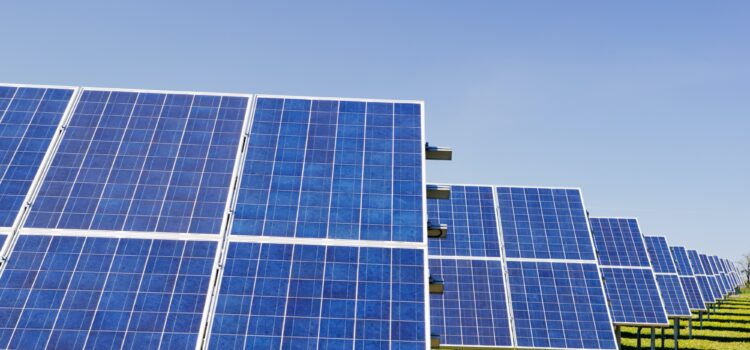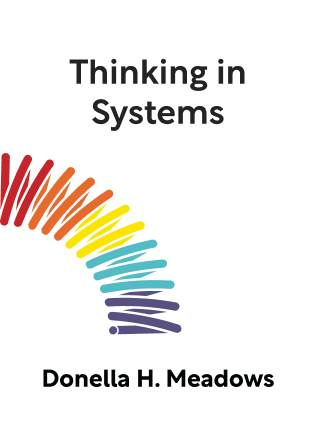

This article is an excerpt from the Shortform summary of "Thinking in Systems" by Donella H. Meadows. Shortform has the world's best summaries of books you should be reading.
Like this article? Sign up for a free trial here .
What are renewable stocks, and how are they different from nonrenewable stocks? How do these types of stocks work within a system.
Renewable stocks are a type of stock that is infinite, at least for a time. Nonrenewable stocks cannot be replenished. Both are important within a system.
Read more about renewable stocks and how they work.
Two Stock Systems
So far we’ve just focused on one-stock systems. In the models, we haven’t worried too much about where the inputs came from and how much there were—the population model assumes infinite food, the thermostat model assumes infinite gas to the furnace.
But in the real world, the inputs have to come from somewhere. In a system model, the inflow into a stock comes from another stock, which is finite. This finite stock causes a constraint on growth—the population can’t grow forever, and the economy can’t grow forever.
We’ll explore this here with two system models, one with a non-renewable stock (oil mining) and one with a renewable stock (commercial fishing). Changing whether the stock is renewable changes the implications of how growth ends.
Renewable Stocks and Non-Renewable Stocks
Consider a reservoir of oil underground. The stock of oil is finite. There is an outflow as the oil is mined. (Shortform note: There is also a very slow inflow of generation of fossil fuels through geological processes, but this occurs over millions of years and is so slow that it’s irrelevant in this situation.)
The company that decides to mine this oil reservoir is a system. The system looks a lot like the system of the economy we just discussed: there is a capital stock (for example, building a mining rig), an inflow of investment in a reinforcing loop, and an outflow of depreciation in a balancing loop.
These two systems are connected by one element—the profit from the oil that is mined. Simplistically, the more oil that is mined, the higher the total profit, which is reinvested into the capital stock; this higher capital stock then mines the resource at a faster rate. In this simplistic system, the capital stock would just grow exponentially, mining faster and faster until the stock is depleted. This is why both renewable stocks and nonrenewable stocks are important.
But we’ll add one complication to this system—the oil gets harder to extract as the stock goes down. In the real world, this is true—the oil gets deeper and needs more drilling to access, or it becomes more dilute and more costly to purify.
This builds a more complicated feedback loop that ties together the two systems:
- The more oil that is extracted, the more the profit, and the more reinvestment into capital.
- The more capital, the faster oil is extracted, and the lower the stock.
- The lower the stock, the more costly it becomes to extract oil, and the lower the profit.
- The lower the profit, the lower the capital investment rate.
This feedback loop leads to a predictable behavior of the system:
- While the oil is easy to extract, profit grows and is reinvested in capital.
- At a certain point when the stock gets low enough, the marginal barrel of oil becomes unprofitable to extract.
- Since profits have dwindled, it no longer makes sense to reinvest in capital stock. The stock depreciates over time, which causes the extraction rate to fall.
- The stock is not depleted to zero—a certain amount of oil remains in the ground, too costly to mine.
Oil companies clearly know this behavior, so before an oil field runs out, they’ve already invested in discovering new oil sources elsewhere.
Implications of the System
Now that you understand the behavior of the system, nudges to different points in the system can influence its behavior, especially when it comes to renewable stocks and nonrenewable stocks.
- New technology can increase the efficiency of extracting oil, thus decreasing the cost. This can allow a reservoir that was unprofitable 40 years ago to become profitable again. (Shortform note: This is what hydraulic fracturing technology, or “fracking,” enabled—a way to extract natural gases that were previously unprofitable to capture.)
- So far, we have been fixing the price per oil barrel. In reality, price fluctuates.
- If the price of oil suddenly skyrockets, oil mines that were unprofitable at a certain cost of mining can become profitable again.
- In contrast, if the price of oil plummets, many oil fields shut down, since the cost of operating exceeds the price of oil they extract. (Shortform note: When oil prices plummet, say due to price wars between foreign oil producers, it might sound good for the average consumer. But it’s bad for the domestic energy industry (oil rigs need to shut down and workers are laid off), and it’s also bad for investment in alternative energy development (there is less incentive to develop alternatives when fossil fuels are cheap).)
The book explores a final consequence of this system—increasing the size of the stock does not proportionately increase the time that the resource lasts. If the size of the oil reservoir doubled, the reservoir would not last for double the amount of time. This is because the capital stock grows exponentially—even if the global oil reservoir were instantaneously doubled, at a capital growth rate of 5% per year, the peak extraction time would only be extended by 14 years (recall the rule of 72 from earlier). And the higher capital stock grows, the steeper the plummet when the stock becomes depleted (in real terms, these are jobs that disappear and communities that are battered).
(Shortform note: While the book steers away from explicit political statements, the implication is that the more we reinvest in harvesting a nonrenewable resource like fossil fuels and avoid developing alternatives, the higher the capital stock and extraction rate will grow, and the steeper the fall will be when the resource depletes.)

———End of Preview———
Like what you just read? Read the rest of the world's best summary of Donella H. Meadows's "Thinking in Systems" at Shortform .
Here's what you'll find in our full Thinking in Systems summary :
- How the world, from bathtub faucets to fish populations, can be seen as simple systems
- The key system traps that hold back progress, such as escalating arms races and policy addiction
- Why seeing the world as systems can give you superpowers in work and life






